Newsletter: As the world burns, California will pick up the pace on climate — maybe
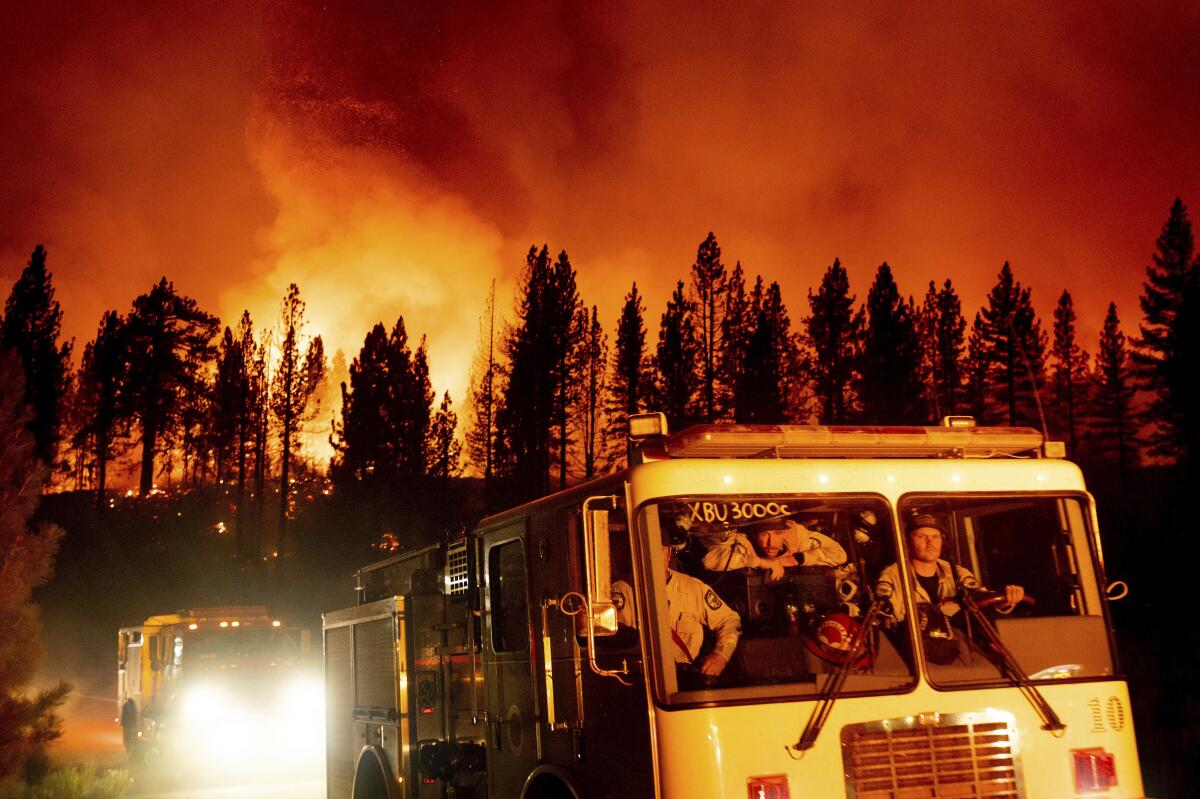
This is the July 22, 2021, edition of Boiling Point, a weekly newsletter about climate change and the environment in California and the American West. Sign up here to get it in your inbox.
Only if you close your eyes and cover your ears and avoid going outside is it possible to ignore the rapidly worsening climate crisis.
Massive wildfires are burning out of control, creating their own weather systems and sending smoke as far east as New York. The American West has already baked through four major heat waves this summer, with several states experiencing their hottest June on record. Europe and China are getting slammed by deadly floods, even as California and its neighbors ache for more water.
“The scenes of desperation and devastation in Zhengzhou added to a portfolio of disasters this year that have raised the specter of irreversible climate change as never before and offered glimpses of what it means to live on a warming planet where human survival grows more fraught,” my colleagues David Pierson, Alice Su and Molly Hennessy-Fiske wrote in a gripping piece.
It was against this backdrop that Gov. Gavin Newsom asked his top lieutenants to hurry up on climate action.
Newsom directed the powerful Air Resources Board this month to evaluate strategies for achieving carbon neutrality by 2035, a decade ahead of California’s current goal for emitting no more heat-trapping pollution than it can keep out of the atmosphere. He also requested that the Public Utilities Commission set a more ambitious target for cleaning up electricity supplies by 2030.
That kind of acceleration — if it happens — could help California secure its status as a global leader on fighting climate change, a role critics say the state has at least partially ceded. As I wrote on Earth Day, other governments have been getting ahead of us, and scientists are increasingly calling for the Golden State to do more, faster. Carbon neutrality by 2035 would fit the bill.
And yet ... there was a part of me, reading the governor’s latest directives and trying to conceptualize the years 2030 and 2035 and 2045, that couldn’t stop thinking about a recent report from the think tank RMI. The authors wrote, “The most important year to phase out fossil fuel infrastructure and invest in clean energy solutions is this year.”
The point is that carbon builds up in the atmosphere and stays there for hundreds of years, wrapping the planet in an ever-thicker blanket of heat. So while it’s crucial to make plans to eventually stop adding more carbon, any pollution we can avoid creating today will prevent a lot more death and destruction than the pollution we avoid creating 10 or 15 or 25 years from now.
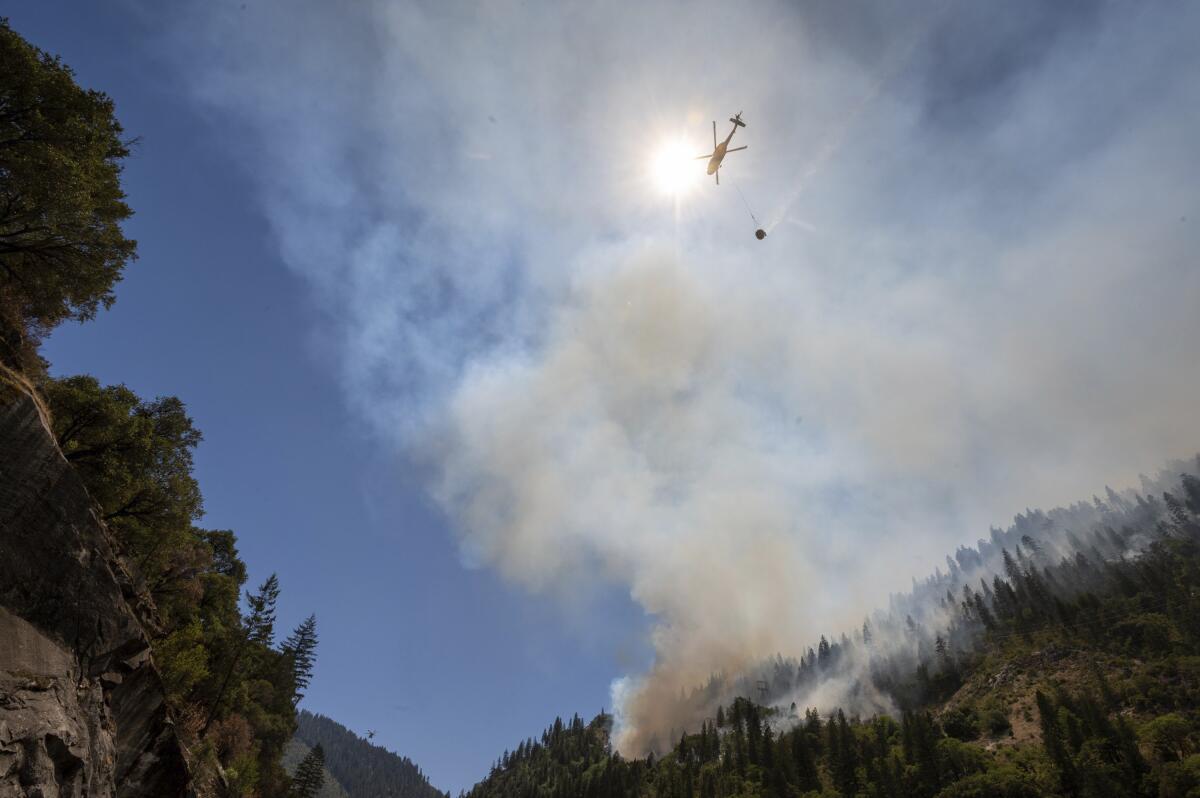
I ran this line of thinking past Jared Blumenfeld, secretary of California’s Environmental Protection Agency. I also asked him why Newsom’s administration is only now starting the process of accelerating the state’s climate and clean energy targets, when the governor suggested almost a year ago — during last summer’s record fire season — that those targets were inadequate.
Blumenfeld told me Newsom has asked him the same question. He described the governor as frustrated by the slow pace of change, especially in light of a draft report from an international group of scientists — which was leaked ahead of global climate talks in Glasgow later this year — warning of the potential for dangerous climate “tipping points” in the not-too-distant future.
California’s current targets “were set in a different time, frankly, when there was less definitive science, or less urgent science, when the realities of climate change weren’t what we’ve seen in these last few weeks,” Blumenfeld said.
“You talk to climate scientists, and they say we need to do more as soon as humanly possible,” he said in an interview.
To be fair, Newsom and his appointees are pushing aggressively on some fronts. They’re making plans for the West Coast’s first offshore wind farms and recently ordered utilities and local governments to buy gargantuan amounts of clean energy. Perhaps most consequentially, the budget Newsom signed this month allocates several billion dollars for clean transportation, including funds to replace dirty diesel trucks with electric alternatives and help low-income Californians switch to less-polluting vehicles.
At the same time, some activists say Newsom can and should be doing more. Encouraging developers to build all-electric housing is one thing, they say, but why not ban natural gas hookups in new construction? What’s stopping the governor from requiring new cars to be zero emission sooner than 2035? Why do public health rules designed to protect people living near oil and gas wells keep getting delayed, and why hasn’t Newsom pushed harder to shutter gas storage fields such as Aliso Canyon?
The governor’s recent directives address at least one of those criticisms. I wrote last year about frustration among clean energy advocates that the Public Utilities Commission had set a target reducing carbon emissions from power plants just 25% by 2030 — a slower pace than emissions fell during the previous decade. The agency is already moving toward a stronger target, but now Newsom has formalized that change in direction, asking commission President Marybel Batjer for a more ambitious goal.
Blumenfeld said the governor is interested in seeing California get 90% of its electricity from clean sources by 2030. That would be well ahead of the state’s current mandate of 100% by 2045, and more in line with President Biden’s goal of 100% by 2035.
“If we could really bend the curve down without affecting reliability or cost, why aren’t we doing that?” Blumenfeld asked.
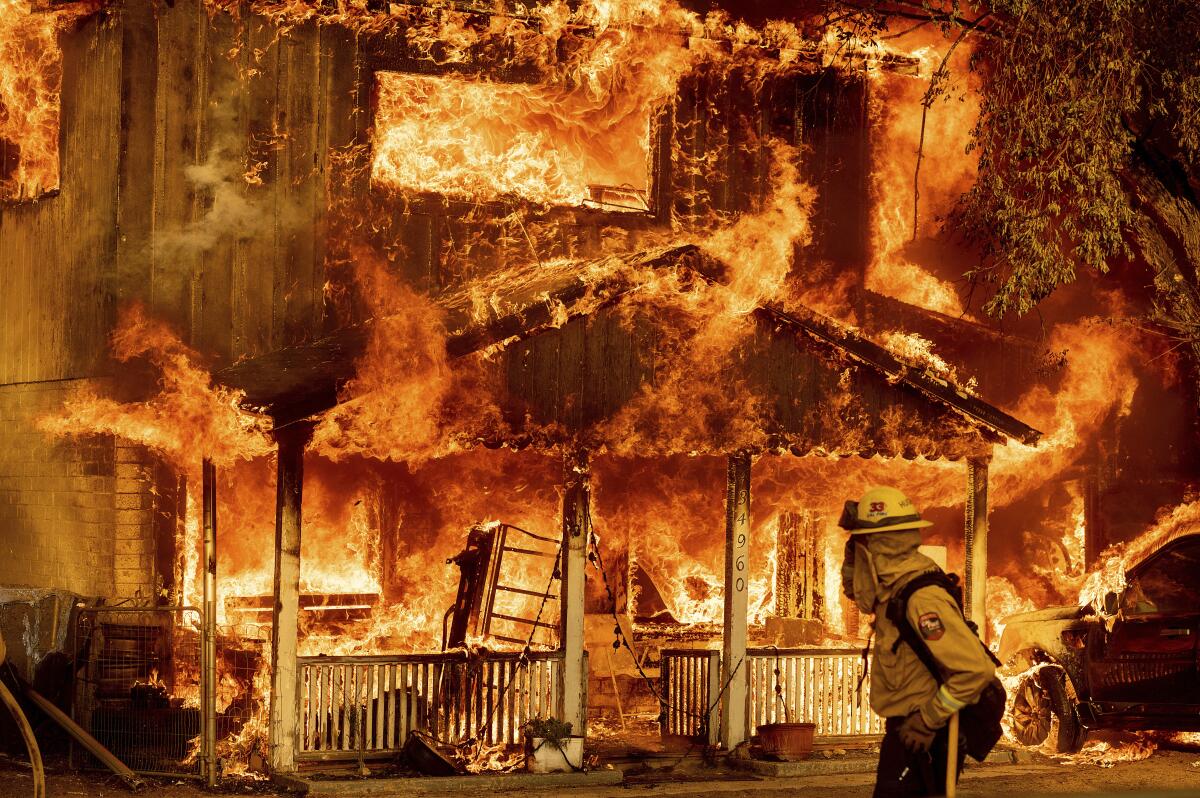
It’s the “reliability” and “cost” parts that can make things difficult, not that they’re necessarily showstoppers. Blumenfeld described keeping the lights on and avoiding too much economic disruption, especially for those who can least afford higher costs, as critical to building a new economy that doesn’t run on carbon. Those challenges require serious analysis, Blumenfeld said — hence Newsom asking state officials to study more aggressive climate targets rather than simply mandating them.
For the Air Resources Board, that will mean using next year’s edition of its twice-a-decade climate “scoping plan” to work through the feasibility of carbon neutrality by 2035. Liane Randolph, the agency’s chair, told me officials will consider a wide range of options for picking up the pace, from carbon capture and storage to programs aimed at helping Californians drive fewer miles.
“The pathway to reducing carbon is about the various strategies that we need to deploy. It’s not just about setting a date,” Randolph said in an interview. “That’s part of the beauty of the scoping plan. It’s really where we roll up our sleeves.”
At the end of the day, it’s hard for me to get too excited about making plans to make plans to slash emissions, even if I understand why it’s necessary. I spent some time in the San Fernando Valley this weekend, and I have no recollection of summer afternoons being so blisteringly hot when I was a kid. I bought an air filtration device last year because I hated the idea of breathing wildfire smoke. I’d be worried about my power going out during the next heat wave if I didn’t already not have AC.
So yes, it seems self-evident that this year is the most important year for reducing emissions.
Blumenfeld certainly thinks so. He also sees long-term goal-setting as crucial for motivating action in the present, because it forces us to work backward and figure out what steps are needed now. While people might be shocked when they realize how much rapid change is needed, he said, only that type of planning will help society develop a “war footing” mentality on climate.
“I really do analogize it to a battle,” he said. “Everyone is realizing the front lines of the battle are a hell of a lot closer than we ever imagined. And the threat from the enemy is real and present.”
And so we go. Here’s what else is happening around the West:
TOP STORIES
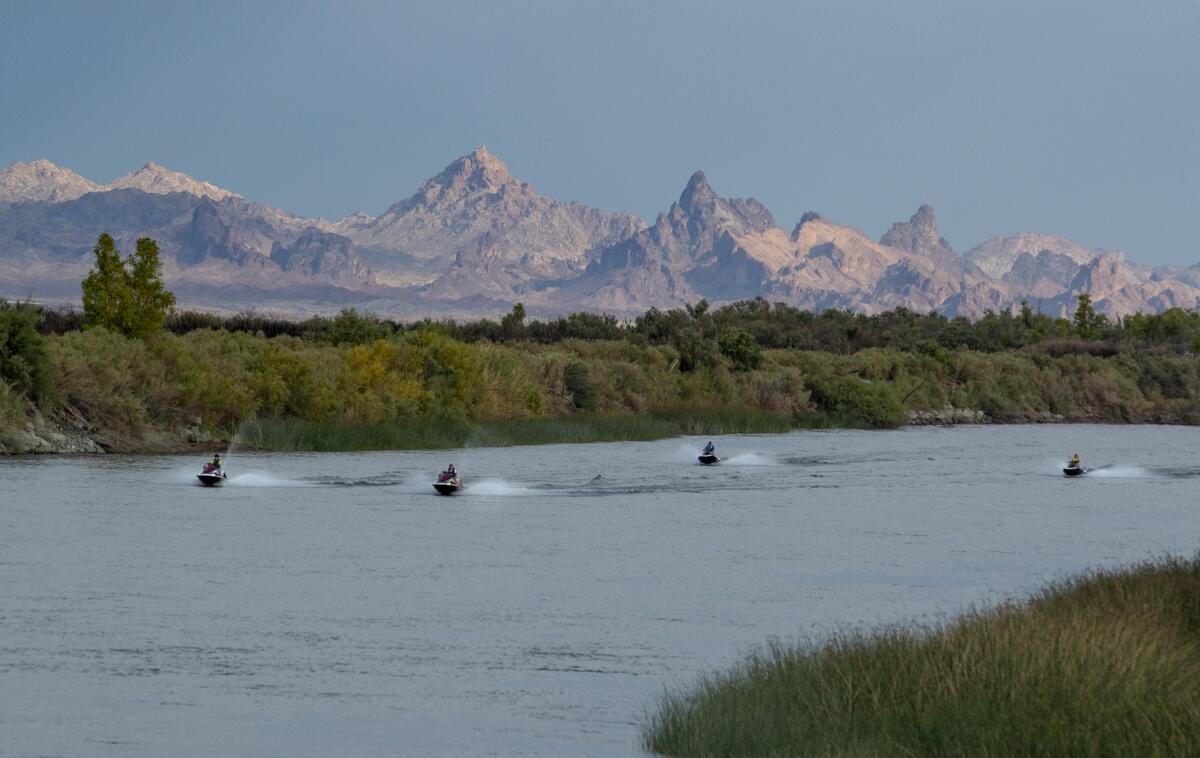
One of America’s hottest cities is down to one water well and is in danger of running dry, even though it sits right on the Colorado River. Here’s the scary and almost unbelievable story from The Times’ Ralph Vartabedian about Needles, Calif., a scenic river town that’s home to Snoopy’s brother Spike in the “Peanuts” comic strip. It’s less than 100 miles downstream from Lake Mead, where a group of farmers and environmentalists from around the West gathered last week to demand that growing cities avoid putting so much pressure on the Colorado as to upend their rural lifestyles. Here’s that story from the Associated Press’ Sam Metz.
A new study finds that higher temperatures significantly increase the risk of injuries for indoor workers, not just outdoor workers. My colleague Anna M. Phillips writes that UCLA and Stanford researchers concluded workplace injuries and accidents in California have increased by as much as 9% on days when temperatures are in the 90s, and as much as 15% on days when they reach triple digits. And the effect has been worse in hotter parts of the state, where lower-income people are more likely to live.
After years of resistance to the idea, Pacific Gas & Electric now plans to bury 10,000 miles of power lines to prevent wildfire ignitions. The company says it figured out while helping to rebuild the town Paradise that it can underground lines en masse for half the cost it previously assumed, J.D. Morris reports for the San Francisco Chronicle. PG&E’s announcement came shortly after it disclosed that its electric infrastructure may have sparked the Dixie fire, just like it did the fire that destroyed Paradise, my colleague Faith E. Pinho reports. Meanwhile, KPCC’s Sharon McNary explains how Acton, a small town in L.A. County’s high desert, fought back against Southern California Edison’s fire-prevention power outages — and may have won at least a partial victory.
DROUGHT CENTRAL
Biologists are trucking endangered Snake River sockeye salmon from the Pacific Ocean to their Idaho spawning grounds, past the dams that impede their movement and rising water temperatures they can’t survive. The tale of their 300-mile truck journey is surprisingly riveting, in a horrible way; my colleague Richard Read brings out the drama in the desperate hunt for chlorine-free ice to keep the fish cool along the route. California has its own efforts to truck fish to safety, as officials warn that unusually hot water could kill nearly all juvenile chinook salmon in the Sacramento River, CNN’s Alexandra Meeks reports.
Drone photos of California’s rapidly diminishing reservoirs are worth way more than 1,000 words about the drought emergency. The Times’ Brian van der Brug captured images of lakes Oroville, Folsom, Trinity and Shasta; check them out here. See also these jarring satellite photos of Shasta Lake in 2019 versus last month, with accompanying words by Hayley Smith. It’s not just water supplies at stake; the hydropower plant at Lake Oroville could go offline for the first time ever as soon as next month, my colleague Julia Wick writes, depriving California of much-needed electricity right when temperatures are typically highest.
Should California have tougher water restrictions in place? The last time drought conditions were this bad, then-Gov. Jerry Brown ordered a 25% reduction in urban use. Some water experts say we need that kind of mandate again, although others think Newsom’s more measured strategy is appropriate, The Times’ Ari Plachta reports. One thing Californians shouldn’t expect anytime soon is new water storage to boost supplies. Although voters approved $2.7 billion to build more dams and groundwater storage banks in 2014, most of those projects are still years away, Dale Kasler and Ryan Sabalow report for the Sacramento Bee.
THE ENERGY TRANSITION
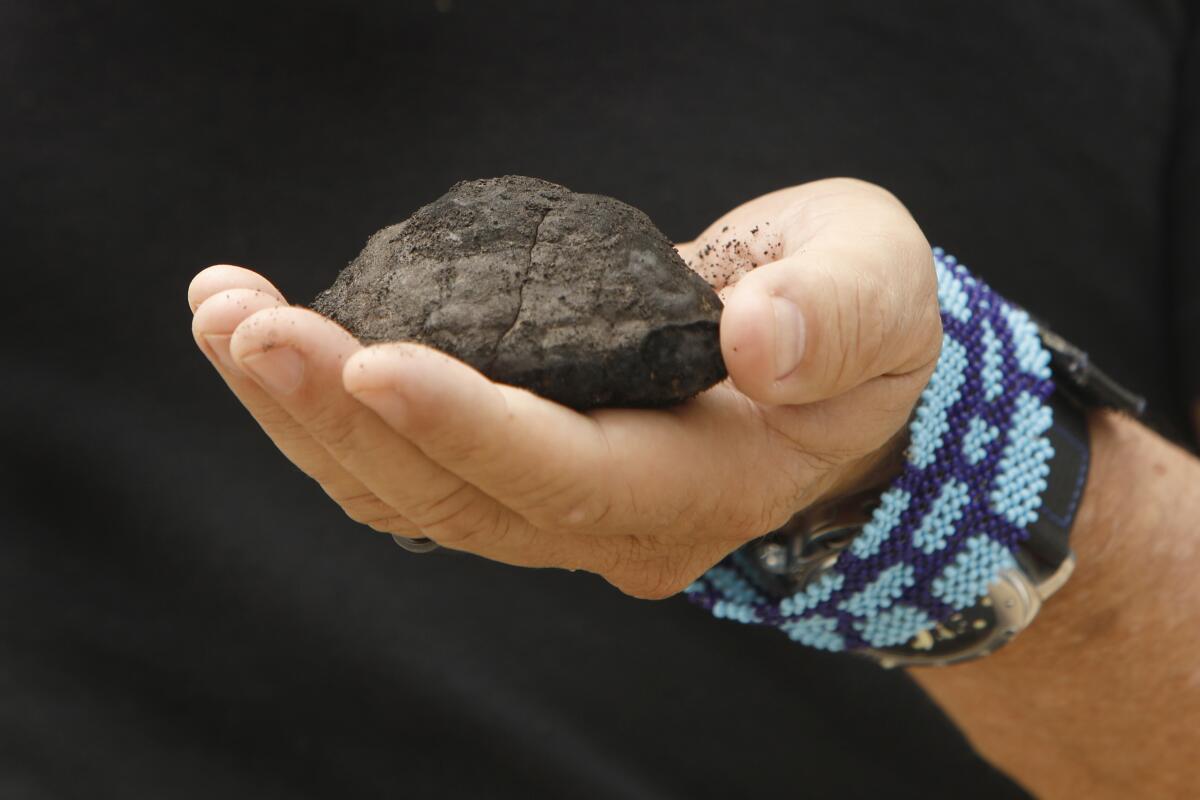
The world needs electric cars — and electric car batteries need raw materials. My colleague Evan Halper has a great in-depth story, with photos by Carolyn Cole, about the possible environmental consequences from the Pacific Ocean seabed to the Great Basin desert of vast new mining operations for lithium and other minerals, and the tradeoffs between protecting ecosystems and drawing down heat-trapping emissions. The Biden administration, meanwhile, hopes to dramatically slash the costs of energy-storage systems that can bank clean power for far longer than lithium-ion batteries, the New York Times’ Brad Plumer reports.
A power line buried in a trench at the bottom of the Columbia River could help the Pacific Northwest transition off fossil fuels. But the potential for environmental harm along the region’s most beloved river is generating blowback. Peter Fairley wrote about the proposal for InvestigateWest, talking with an Indigenous activist and others with concerns. In a power-line story with a different twist, a long-planned transmission project designed to move clean energy to Southern California cities is finally finished — and it’s the country’s first power line to be partly owned by a Native American tribe, the Desert Sun’s Amanda Ulrich reports.
Sempra Energy has hired former Trump administration Energy Secretary Dan Brouillette to lead its new infrastructure division. Sempra is the parent company of Southern California Gas and San Diego Gas & Electric, and it’s making a big push to export liquefied natural gas overseas, as I’ve reported previously. Brouillette was an influential supporter of LNG when he worked for President Trump, and he’ll play a key role in Sempra’s export plans, Rob Nikolewski reports for the San Diego Union-Tribune.
Record heat. Raging fires. What are the solutions?
Get Boiling Point, our newsletter about climate change, the environment and building a more sustainable California.
You may occasionally receive promotional content from the Los Angeles Times.
ON OUR PUBLIC LANDS
“With tales of conspiracy, mishandled funds and even federal neglect, I knew I had found a good story, no matter how buried it was in arcane scientific details.” That’s how my colleague Thomas Curwen described his decision to write about the Calico Early Man Site, a decades-old archaeological dig in San Bernardino County that some experts insist offers proof of human settlement in North American more than 200,000 years ago — a controversial claim. Here is Thomas’ fascinating deep dive on the site, which federal officials are now planning to shut down, along with a behind-the-scenes look at how he reported the story.
A Caltech scientist drilled 29 holes into the Volcanic Tablelands of California’s Owens Valley, just feet from a rock carving that’s part of one of the oldest recorded petroglyph sites in the West. The Times’ Louis Sahagún reports that the university agreed to pay $25,000 to the federal government to cover the costs of repairing the damage. Caltech also issued an apology that starts by downplaying what happened, describing the drilling as “an isolated incident that took place more than four years ago.”
If California wants to reach carbon neutrality by 2035 — or any other year — it will need to grapple with the fact that climate change is reducing the ability of natural landscapes to keep carbon out of the atmosphere. New research out of UC Irvine finds that vegetation losses caused by higher temperatures, wildfires and other climate-related threats could lead to a 16% decline in the state’s natural carbon storage capacity, Ben Brazil reports for The Times. Those losses are already underway.
ONE MORE THING
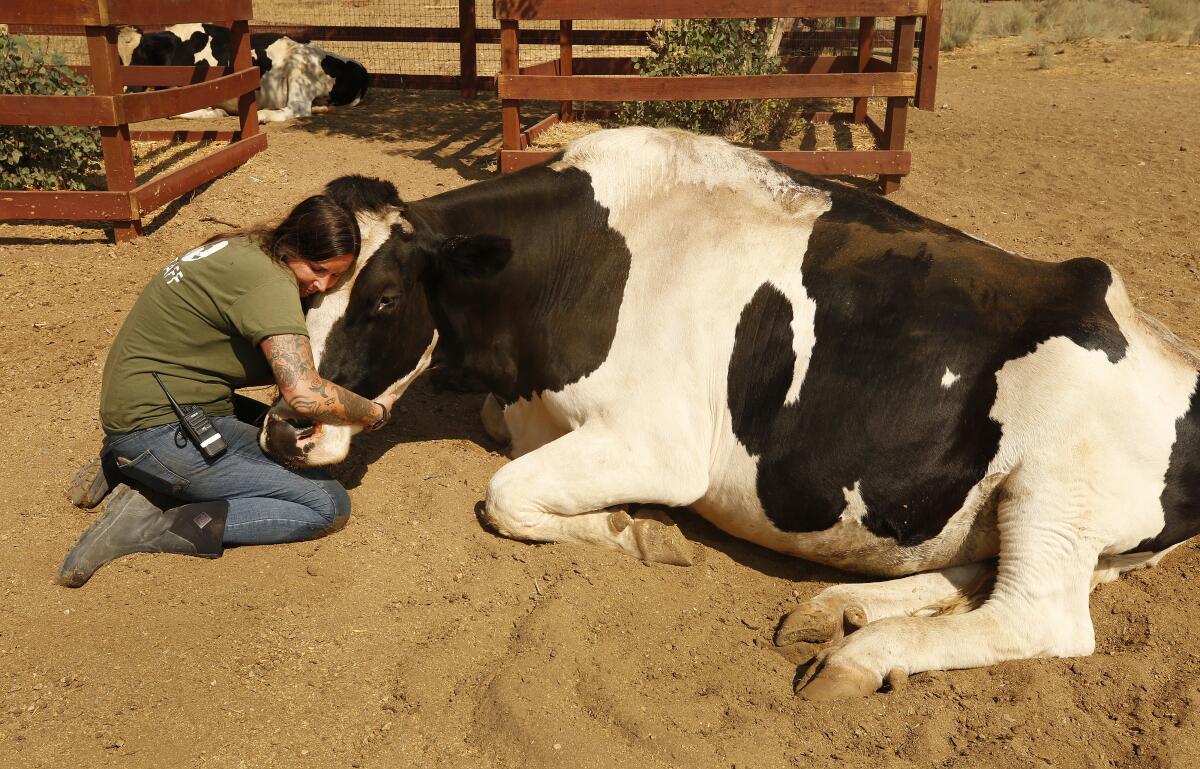
I enjoyed this column by my colleague Gustavo Arellano about two cows that evaded capture by an L.A. meatpacking plant, and how they serve as a reminder of Southern California’s ranching history — and the floods and drought that helped destroy it.
That history is on display at Los Encinos State Historic Park in the San Fernando Valley, which I visited for the first time over the weekend. Indigenous people built a village there because of its natural spring, which offered a year-round water source. It was later a part of Rancho El Encino and a stopping point on El Camino Real, which connected Spanish missions. An adobe structure built in 1849 is still standing, and today serves as a small museum. I tweeted a few photos.
I especially loved the water poems that accompanied some of the adobe‘s exhibits. I don’t know who wrote them — someone at the state parks department? — but would love some help figuring it out. My favorite poem, especially during this time of drought:
“Water and earth
Join hands
To become
Adobe,
Feed trees
That become
Roof and floors
Thick adobe walls,
Broad wooden roof.
Sturdy wooden floors —
Encino’s home
Of water and earth”
We’ll be back in your inbox next week. If you enjoyed this newsletter, please consider forwarding it to your friends and colleagues.




